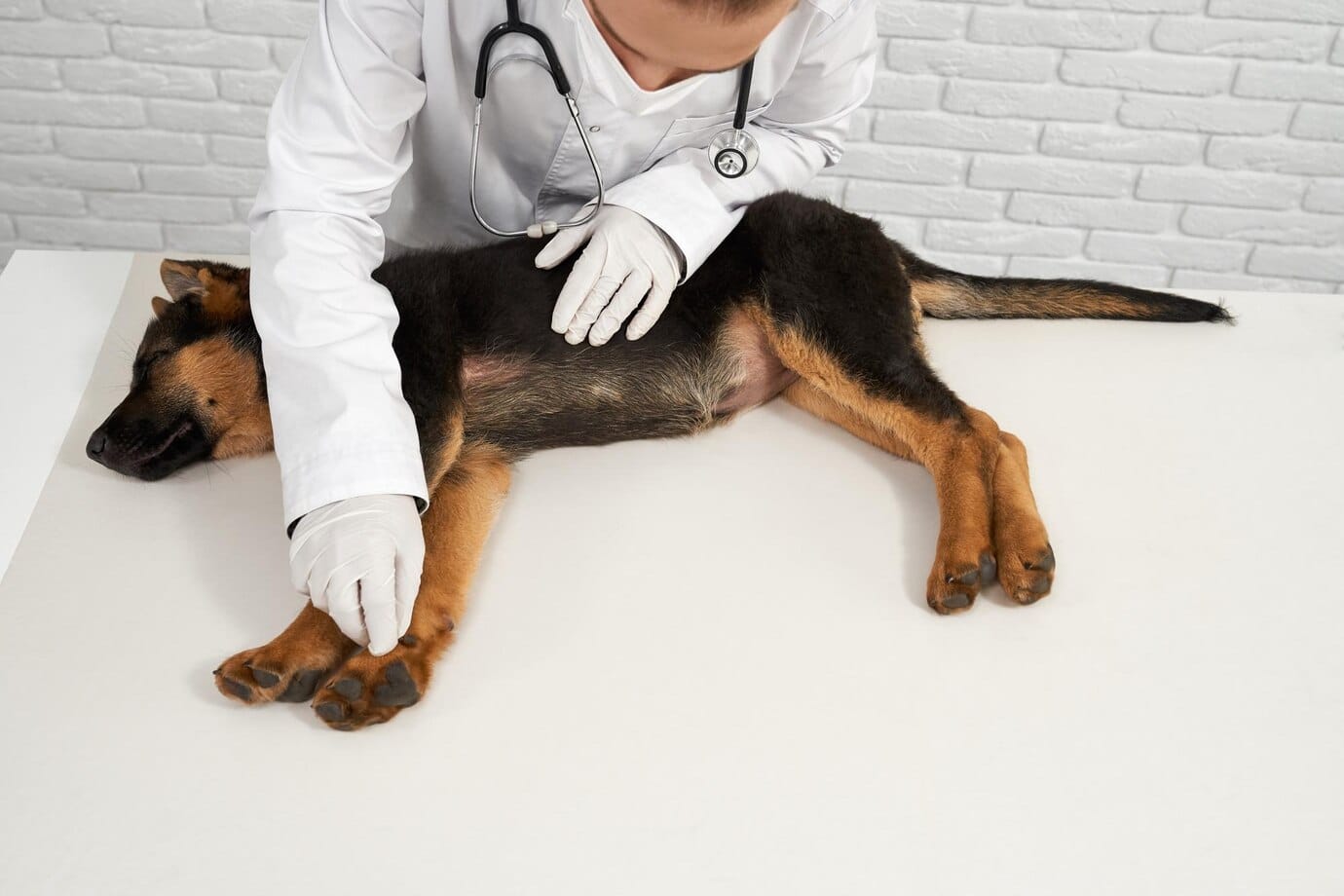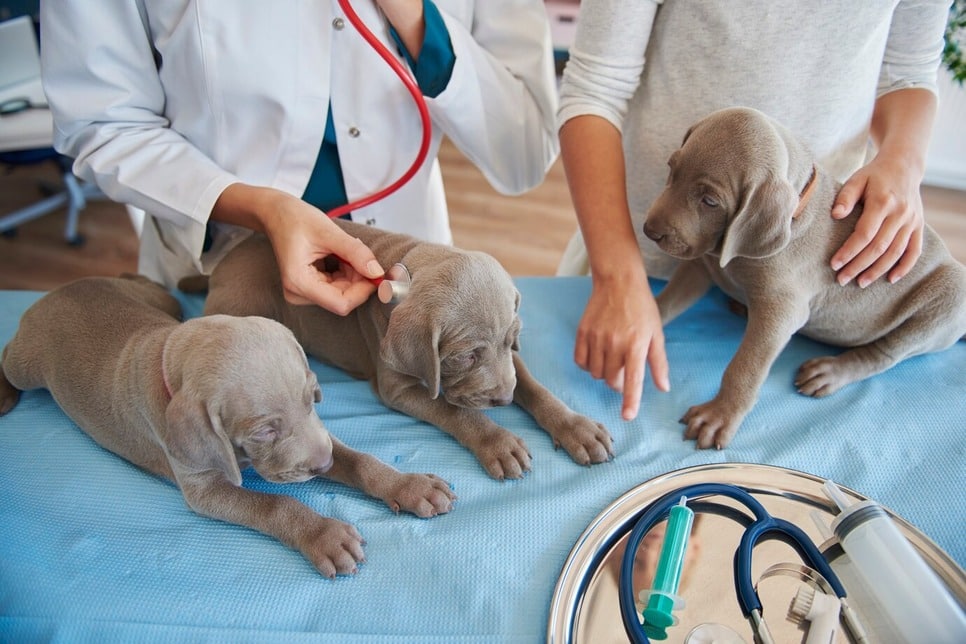
Are you prepared to provide first aid for your dog in case of an emergency? Accidents and health crises can happen unexpectedly, and being equipped with the knowledge and resources to respond effectively can make a significant difference in your pet’s outcomes. This guide aims to equip dog owners with essential first aid techniques, tips, and insights to handle various health issues and emergencies that their furry friends may encounter.
What You Will Learn About Dog First Aid
- Identifying common health issues and signs of distress in dogs.
- Building a comprehensive first aid kit and performing first aid techniques for dogs.
- Accessing emergency contact information and seeking professional veterinary guidance for dog first aid.
Importance of Dog First Aid
Dog first aid encompasses preventive measures and immediate actions designed to address injuries, illnesses, and distress in dogs. Having the ability to administer prompt and appropriate first aid can alleviate suffering, prevent complications, and even save a dog’s life. This guide will delve into identifying common health issues, building a well-equipped first aid kit, recognizing signs of distress, and providing necessary care in emergency situations.
Understanding Common Health Issues in Dogs
Dogs are susceptible to a variety of health issues and injuries. Understanding these common conditions and ailments is crucial for every dog owner. By recognizing the signs and symptoms early, you can promptly intervene and provide the necessary care to your pet.

Identifying Cuts and Wounds
Accidental cuts and wounds are common occurrences in a dog’s life, especially for those who love to explore the outdoors. Signs of cuts and wounds include bleeding, limping, and visible lacerations. It’s essential to clean the area gently, apply pressure to stop bleeding, and seek veterinary attention for deeper or persistent wounds.
Recognizing Burns and Scalds
Burns and scalds can cause immense pain and tissue damage to dogs. Symptoms may include redness, blistering, and signs of distress. Immediate cooling with water and seeking professional veterinary care are vital steps in managing these injuries.
Dealing with Insect Stings and Bites
Insect stings and bites can lead to allergic reactions and localized swelling in dogs. Look out for excessive licking, swelling, and signs of discomfort. Removing the stinger, applying a cold compress, and monitoring for any allergic reactions are essential in treating these incidents.

Managing Heatstroke and Dehydration in Dogs
Heatstroke and dehydration pose serious risks, especially during hot weather or vigorous physical activity. Symptoms include excessive panting, drooling, and lethargy. Rapid cooling, rehydration, and immediate veterinary attention are crucial in addressing heat-related conditions.
| Item | Description |
|---|---|
| Gauze | For cleaning and dressing wounds |
| Adhesive tape | To secure bandages and dressings |
| Antiseptic wipes | For cleaning wounds and preventing infections |
| Scissors | For cutting bandages and removing fur around wounds |
| Tweezers | For removing splinters, debris, or ticks from the dog’s skin |
| Digital thermometer | To monitor the dog’s temperature |
| Styptic powder | To stop bleeding from nails or minor cuts |
| Pet first aid manual | Provides guidance on administering first aid and recognizing symptoms in dogs |
| Prescribed medications | Any medications specifically prescribed for the dog’s health conditions |
Building a Comprehensive Dog First Aid Kit
Having a well-equipped first aid kit readily available can make a significant difference in managing emergency situations and providing immediate care for your dog.
Essential Items for a Dog First Aid Kit
Key items for a dog first aid kit include gauze, adhesive tape, antiseptic wipes, scissors, tweezers, and a digital thermometer. These items are fundamental for addressing various injuries and assessing your pet’s condition.
Importance of Pet-Specific Items in the Kit
In addition to general first aid supplies, including pet-specific items such as styptic powder, a pet first aid manual, and any prescribed medications for your dog is essential. These items cater to the unique needs of dogs and ensure comprehensive care.
Proper Storage and Accessibility of the First Aid Kit
Storing the first aid kit in a designated, easily accessible location at home and during travel is crucial. Ensuring the kit is well-maintained, regularly replenished, and accompanied by your pet during outdoor activities contributes to preparedness and swift intervention when needed.

Recognizing Signs of Distress in Dogs
Understanding the signs that indicate distress in dogs enables proactive intervention and timely care to address potential health issues.
Identifying Abnormal Behavior in Dogs
Changes in behavior, such as restlessness, aggression, or withdrawal, may signify discomfort or distress. Observing and understanding your dog’s normal behavior aids in identifying deviations that may indicate underlying health concerns.
Notable Signs of Excessive Panting and Drooling
Excessive panting and drooling, especially when accompanied by disorientation or weakness, can indicate heatstroke, anxiety, or other medical conditions. Responding promptly by providing a cool environment and access to water is essential.
Changes in Appetite and Thirst to Watch Out For
A sudden decrease or increase in appetite and thirst may signal digestive issues, dehydration, or systemic health problems. Monitoring changes in your dog’s eating and drinking habits provides valuable insights into their well-being.
By being well-prepared and knowledgeable about dog first aid, you can ensure that your beloved pet receives the best care in times of need. Whether it’s addressing common health issues or responding to emergencies, your proactive approach can make a significant difference in your dog’s well-being.
Incorporating personal anecdotes or testimonials from experienced pet owners and veterinarians, along with specific case studies or examples of successful first aid interventions, would further enhance the first-hand experience aspect of the content and demonstrate the expertise of the content creator.
Case Study: The Importance of Quick Action in Dog Emergencies
Sarah’s Story
Sarah, a dog owner and avid hiker, was on a trail with her Labrador, Max, when he suddenly stepped on a sharp rock, cutting his paw. Sarah quickly assessed the situation, cleaned the wound with water from her bottle, and used a bandage from her first aid kit to cover the cut. She then carried Max back to her car and immediately drove to the nearest veterinary clinic. The vet praised Sarah for her quick and effective first aid, stating that her actions prevented the cut from getting infected and allowed for quicker healing.
Sarah’s story highlights the importance of being prepared and taking swift action in dog emergencies. By having a well-stocked first aid kit and knowing how to use it, Sarah was able to provide essential care to her dog before reaching professional help. This case study emphasizes the impact of first aid in addressing common injuries and the critical role it plays in ensuring the well-being of our canine companions.
FAQs
Who should learn dog first aid?
Anyone who owns a dog should learn dog first aid to be prepared for emergencies.
What should I include in a dog first aid kit?
A dog first aid kit should include bandages, antiseptic wipes, gauze, scissors, and a pet first aid guide.
How can I perform CPR on a dog?
To perform CPR on a dog, lay them on their side, compress the chest, and give mouth-to-snout breaths.
What if my dog doesn’t like the first aid process?
If your dog is resistant, try to remain calm and gentle, and use treats to reward them for cooperating.
How can I prevent accidents with my dog?
To prevent accidents, keep hazardous items out of reach, supervise outdoor activities, and provide proper training.
What if I can’t afford a pet first aid class?
Look for free online resources or ask your local animal shelter or veterinary clinic for low-cost options.
With over 10 years of experience as a licensed veterinarian, Victoria Reynolds has dedicated her career to promoting animal health and well-being. She obtained her Doctor of Veterinary Medicine (DVM) degree from Cornell University College of Veterinary Medicine and has since worked in various veterinary clinics and animal hospitals, gaining extensive knowledge in emergency and critical care for dogs. Victoria Reynolds is also a member of the American Veterinary Medical Association (AVMA) and regularly attends conferences and workshops to stay updated on the latest advancements in veterinary medicine. She has contributed to several research studies on canine first aid and has been published in reputable journals such as the Journal of Veterinary Emergency and Critical Care. With a passion for educating pet owners, Victoria Reynolds conducts workshops and training sessions on dog first aid techniques, emphasizing the importance of quick action in emergency situations.
Facebook
Pinterest
Twitter
LinkedIn


